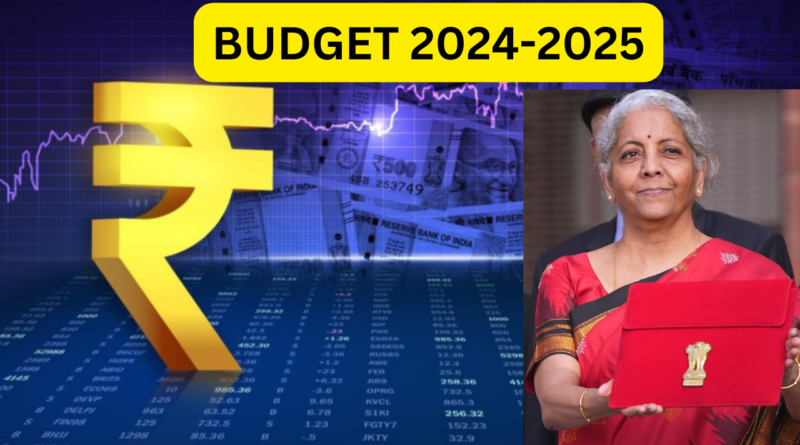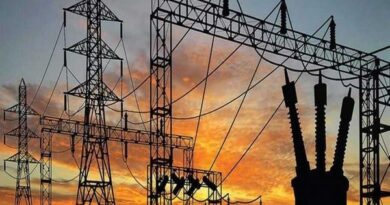Budget 2024-2025: Key Features
On 23 July, the Hon’ble Finance Minister, Nirmala Sitharaman, presented the first budget of the current government. Budget 2024-2025 emphasizes employment, skilling, MSMEs, and support for the middle class, aiming for comprehensive prosperity. It outlines nine key priorities to create ample opportunities for everyone and suggests specific actions and reforms necessary to achieve the goal of Viksit Bharat.

Budget 2024-2025 Overview
Focus on Employment, Skilling, MSMEs, and the Middle Class: The budget is primarily centered on creating employment opportunities, enhancing skill development, supporting Micro, Small, and Medium Enterprises (MSMEs), and providing relief and benefits to the middle class.
Prime Minister’s Package for Youth: A comprehensive package comprising five schemes and initiatives aimed at facilitating employment, skilling, and other opportunities for 4.1 crore youth over a five-year period, with a central outlay of INR 2 lakh crore.
Provision for Education, Employment, and Skilling: An allocation of INR 1.48 lakh crore is earmarked specifically for initiatives related to education, employment, and skilling.
Budget Focus Areas
Aligned with the Viksit Bharat strategy, the budget emphasizes nine priorities to foster opportunities for all:
- Agriculture productivity and resilience
- Employment and skilling
- Inclusive human resource development and social justice
- Manufacturing and services
- Urban development
- Energy security
- Infrastructure
- Innovation, research, and development
- Next-generation reforms
Future budgets will build upon these priorities.
Priority 1: Agriculture Productivity and Resilience
Agricultural Research Transformation: A comprehensive review of agricultural research will focus on increasing productivity and developing climate-resilient varieties. Funding will be provided on a challenge basis, including private sector participation. Domain experts will oversee this research.
New Varieties Release: 109 new high-yielding and climate-resilient crop varieties will be introduced.
Natural Farming: Over two years, 1 crore farmers will be initiated into natural farming, supported by certification and branding. This will be implemented through scientific institutions and gram panchayats. Additionally, 10,000 bio-input resource centers will be established.
Pulses and Oilseeds Missions: Efforts will be intensified to achieve self-sufficiency in pulses and oilseeds, focusing on production, storage, and marketing.
Vegetable Production: Large-scale vegetable production clusters will be developed near major consumption centers, and supply chains will be promoted through farmer-producer organizations, cooperatives, and start-ups.
Digital Public Infrastructure for Agriculture: Digital Public Infrastructure (DPI) in agriculture will be implemented to cover farmers and their lands within three years. This year, a digital crop survey for Kharif using DPI will be conducted in 400 districts, involving 6 crore farmers. Jan Samarth-based Kisan Credit Cards will be issued in five states.
Shrimp Production and Export: Financial support will be provided for Nucleus Breeding Centers for shrimp broodstocks, and financing for shrimp farming, processing, and export will be facilitated through NABARD.
National Cooperation Policy: A National Cooperation Policy will be drafted to boost the rural economy and create employment opportunities in the cooperative sector.
Agriculture and Allied Sector Funding: INR 1.52 lakh crore is allocated for agriculture and allied sectors.
Priority 2: Employment & Skilling
Employment Linked Incentive: Three schemes will be implemented as part of the Prime Minister’s package:
- Scheme A: Providing one-month wages (up to INR 15,000) to all new workforce entrants in formal sectors, with an eligibility limit of INR 1 lakh per month salary.
- Scheme B: Incentivizing additional employment in the manufacturing sector linked to first-time employees.
- Scheme C: Reimbursing employers up to INR 3,000 per month for two years towards their EPFO contribution for each additional employee.
Women Workforce Participation: Working women’s hostels will be established in collaboration with industry, along with women-specific skilling programs and market access promotion for women SHG enterprises.
Skilling Programme: A new centrally sponsored scheme will skill 20 lakh youth over five years in collaboration with state governments and industry. 1,000 Industrial Training Institutes will be upgraded with an outcome orientation.
Skilling Loans: The Model Skill Loan Scheme will be revised to provide loans up to INR 7.5 lakh with a government-promoted fund guarantee, benefiting 25,000 students annually.
Education Loans: Financial support will be provided for loans up to INR 10 lakh for higher education in domestic institutions for youth not covered under any government schemes.
Priority 3: Inclusive Human Resource Development and Social Justice
Saturation Approach: Aiming for comprehensive social justice, this approach will cover all eligible individuals through various programs, including those for education and health. Schemes supporting economic activities by craftsmen, artisans, self-help groups, scheduled caste, scheduled tribe, and women entrepreneurs, and street vendors will be strengthened.
Purvodaya: A development plan for the eastern region, including Bihar, Jharkhand, West Bengal, Odisha, and Andhra Pradesh, will cover human resources, infrastructure, and economic opportunities. The Amritsar-Kolkata Industrial Corridor will catalyze industrial development, with an industrial node at Gaya. Developments in Bihar will include road connectivity, power projects, airports, medical colleges, and sports infrastructure.
Women-Led Development: Over INR 3 lakh crore is allocated for schemes benefiting women and girls.
Priority 4: Manufacturing & Services
MSME Support: A package covering financing, regulatory changes, and technology support for MSMEs includes:
- Credit Guarantee Scheme: Facilitating term loans for MSMEs to purchase machinery and equipment without collateral, with a self-financing guarantee fund providing up to INR 100 crore in guarantees.
- New MSME Credit Assessment Model: Public sector banks will develop in-house capabilities to assess MSME credit.
- Credit Support During Stress Period: A new mechanism for MSMEs to access credit during stress periods will be introduced.
- Mudra Loans: The limit for Mudra loans will be increased to INR 20 lakh for entrepreneurs who have successfully repaid previous loans.
- TReDS Platform Onboarding: The turnover threshold for mandatory onboarding on the TReDS platform will be reduced to INR 250 crore.
- SIDBI Branches: SIDBI will open new branches to serve all major MSME clusters within three years, expanding to 168 out of 242 clusters this year.
- MSME Units for Food Irradiation and Testing: Financial support for 50 multi-product food irradiation units and 100 NABL-accredited food quality and safety testing labs.
- E-Commerce Export Hubs: Establishing E-Commerce Export Hubs in PPP mode to enable MSMEs and traditional artisans to sell their products internationally.
Manufacturing & Services Promotion:
- Industrial Parks: Development of investment-ready industrial parks in or near 100 cities, with twelve parks sanctioned under the National Industrial Corridor Development Programme.
- Rental Housing: Facilitating rental housing for industrial workers in PPP mode with VGF support.
- Shipping Industry: Implementing ownership, leasing, and flagging reforms to improve the share of the Indian shipping industry.
- Critical Mineral Mission: Promoting domestic production, recycling, and overseas acquisition of critical minerals.
- Offshore Mining: Auctioning offshore blocks for mining.
- Digital Public Infrastructure Applications: Developing DPI applications for productivity gains and business opportunities.
- Integrated Technology Platform for IBC: Improving outcomes under the Insolvency and Bankruptcy Code (IBC) with an integrated technology platform.
- Voluntary Closure of LLPs: Extending C-PACE services for voluntary closure of LLPs.
- National Company Law Tribunals: Strengthening the tribunal system for faster insolvency resolution.
- Debt Recovery: Reforming and strengthening debt recovery tribunals.
Priority 5: Urban Development
Cities as Growth Hubs: Development of cities as growth hubs through economic and transit planning, and orderly development of peri-urban areas utilizing town planning schemes.
Creative Redevelopment of Cities: Formulation of a framework for creative brownfield redevelopment of existing cities with transformative impact through enabling policies, market-based mechanisms, and regulation.
Transit-Oriented Development: Formulation of transit-oriented development plans for 14 large cities with populations above 30 lakh, along with implementation and financing strategies.
Urban Housing: Under the PM Awas Yojana Urban 2.0, addressing housing needs of 1 crore urban poor and middle-class families with an investment of INR 10 lakh crore, including central assistance of INR 2.2 lakh crore over five years. Enabling policies and regulations for efficient and transparent rental housing markets.
Water Supply and Sanitation: Promotion of water supply, sewage treatment, and solid waste management projects and services in 100 large cities through bankable projects, with use of treated water for irrigation and filling nearby tanks.
Priority 6: Energy Security
Energy Transition: Drafting a policy document on appropriate energy transition pathways balancing employment, growth, and environmental sustainability.
PM Surya Ghar Muft Bijli Yojana: Continuation and further encouragement of the PM Surya Ghar Muft Bijli Yojana, which has seen significant registrations and applications.
Pumped Storage Policy: Drafting a policy for promoting pumped storage projects for electricity storage and integration of renewable energy.
Alternate Fuels: Promotion of alternate fuels and ethanol blending under the National Biofuel Policy.
Phased Natural Gas Penetration: Acceleration of natural gas penetration in households, the industrial sector, and the transport sector under the National Gas Grid Project.
Zero Emission Urban Public Transport: Drafting a policy document for incentivizing adoption of zero-emission technologies in urban public transport.
Energy Efficiency: Steps for accelerating energy efficiency measures in households, buildings, industry, transport, and agriculture under the National Mission for Enhanced Energy Efficiency (NMEEE).
Electric Mobility: Promotion of electric mobility with incentives under the Faster Adoption and Manufacturing of Hybrid and Electric Vehicles (FAME) scheme, covering 20 lakh vehicles.
Priority 7: Technology-Driven Growth
Digital Public Infrastructure: Facilitation of DPI for credit, skilling, health, agriculture, and other domains through a DPI Growth Plan in collaboration with states.
AI and Emerging Technologies: Promotion of Artificial Intelligence and emerging technologies through National AI Policy, with specific focus on skilling and startup support.
Industry 4.0: Facilitation of Industry 4.0 adoption through policy support and initiatives.
Research and Development: Enhancement of public sector R&D and facilitation of private sector R&D through financial support and enabling policies.
Priority 8: Financial Sector and Infrastructure
Banking Reforms: Continued reforms in the banking sector to enhance efficiency, reduce NPAs, and strengthen governance.
Insurance Sector: Promotion of insurance penetration with focus on health, agriculture, and other segments.
Financial Inclusion: Steps for enhancing financial inclusion, with focus on digital banking, payments, and insurance.
Public-Private Partnerships: Promotion of PPPs in infrastructure development, particularly in roads, railways, airports, and urban infrastructure.
Asset Monetization: Continued focus on asset monetization to unlock value and generate resources for infrastructure investment.
Priority 9: Ease of Living and Doing Business
Economic Policy Framework An Economic Policy Framework will be developed to outline the overall approach to economic development and establish the scope for the next generation of reforms. These reforms aim to create employment opportunities and sustain high growth. The government will initiate and incentivize reforms to improve productivity across all factors of production—land, labor, capital, and entrepreneurship—while leveraging technology to enhance overall productivity and reduce inequality.
Promoting Competitive Federalism To encourage competitive federalism and motivate states to implement reforms swiftly, a significant portion of the 50-year interest-free loan will be allocated. In collaboration with states, the following reforms will be pursued:
Land-Related Reforms by State Governments
- Rural Areas: Initiatives will include assigning Unique Land Parcel Identification Numbers (ULPIN) or Bhu-Aadhaar for all lands, digitizing cadastral maps, surveying map subdivisions per current ownership, establishing a land registry, and linking it to the farmers’ registry. These actions will facilitate credit flow and other agricultural services.
- Urban Areas: Land records will be digitized using GIS mapping. An IT-based system for property record administration, updating, and tax administration will be established to improve the financial position of local urban bodies. These reforms will be incentivized for completion within the next three years through appropriate fiscal support.
Labor Reforms The government will provide a range of services for employment and skilling through comprehensive integration of the e-shram portal with other portals, creating a one-stop solution. Services will include open architecture databases for the labor market, skill requirements, available job roles, and mechanisms to connect job seekers with potential employers and skill providers. The Shram Suvidha and Samadhan portals will be revamped to enhance ease of compliance for industry and trade.
Financial Sector Vision and Strategy To meet the financing needs of the economy, the government will release a vision and strategy document for the financial sector. This document will prepare the sector in terms of size, capacity, and skills, setting the agenda for the next five years and guiding the efforts of the government, regulators, financial institutions, and market participants.
Climate Finance Taxonomy A taxonomy for climate finance will be developed to enhance the availability of capital for climate adaptation and mitigation. This will support the country’s climate commitments and green transition.
Variable Capital Company Structure The government will seek legislative approval for a Variable Capital Company structure, providing an efficient and flexible mode for financing the leasing of aircraft and ships, as well as pooled funds for private equity.
Foreign Direct Investment and Overseas Investment Rules and regulations for Foreign Direct Investment and Overseas Investments will be simplified to facilitate FDI, prioritize investments, and promote the use of the Indian Rupee for overseas investments.
Adoption of Technology The government will enhance the adoption of technology to drive the digitalization of the economy.
Ease of Doing Business To improve Ease of Doing Business, the government is working on the Jan Vishwas Bill 2.0. States will be incentivized to implement their Business Reforms Action Plans and digitalize processes.
Data and Statistics To improve data governance, collection, processing, and management, sectoral databases established under the Digital India mission will be utilized, with active use of technology tools.
ALSO READ: 5 Best Free Budgeting Apps For 2024
Taxation
Indirect Taxes A comprehensive review of the rate structure over the next six months will rationalize and simplify customs duty rates to facilitate trade, remove duty inversion, and reduce disputes.
Sector-Specific Customs Duty Proposals
- Medicines and Medical Equipment: Full exemption for three more cancer medicines from customs duties. Adjustments in BCD on x-ray tubes and flat panel detectors for medical x-ray machines.
- Mobile Phones and Related Parts: Reduction of BCD on mobile phones, PCBA, and mobile chargers to 15%.
- Critical Minerals: Full exemption for customs duties on 25 critical minerals and reduction of BCD on two, boosting the processing and refining of these minerals.
- Solar Energy: Expansion of the list of exempted capital goods for manufacturing solar cells and panels. The exemption for customs duties on solar glass and tinned copper interconnect will not be extended.
- Marine Products: Reduction of BCD on certain broodstock, polychaete worms, shrimp, and fish feed to 5%. Exemption of customs duty on various inputs for manufacturing shrimp and fish feed.
- Leather and Textile: Reduction of BCD on real down filling material from duck or goose. Expansion of the list of exempted goods for manufacturing leather and textile garments, footwear, and other leather articles for export. Reduction of BCD on methylene diphenyl diisocyanate (MDI) for manufacturing spandex yarn from 7.5% to 5%.
- Precious Metals: Reduction of customs duties on gold and silver to 6% and on platinum to 6.4%.
- Other Metals: Removal of BCD on ferro nickel and blister copper to reduce production costs of steel and copper. Continuation of nil BCD on ferrous scrap and nickel cathode, and concessional BCD of 2.5% on copper scrap.
- Electronics: Removal of BCD on oxygen-free copper for manufacturing resistors and certain parts for connectors.
- Chemicals and Petrochemicals: Increase in BCD on ammonium nitrate from 7.5% to 10%.
- Plastics: Increase in BCD on PVC flex banners from 10% to 25%.
- Telecommunication Equipment: Increase in BCD on PCBA of specified telecom equipment from 10% to 15%.
- Trade Facilitation: Increase in the period for exporting goods imported for repairs to one year. Extension of the re-import time limit for goods under warranty repairs from three to five years.
Direct Taxes
Investment
- Abolition of the angel tax for all classes of investors to bolster the startup ecosystem, entrepreneurial spirit, and innovation.
- Introduction of a simpler tax regime for foreign shipping companies operating domestic cruises.
- Application of safe harbor rates for foreign mining companies selling raw diamonds.
- Reduction of corporate tax rate on foreign companies from 40% to 35% to attract foreign capital for India’s development needs.
These next-generation reforms aim to create a conducive environment for economic growth, investment, and development across various sectors, ensuring a prosperous and sustainable future for India.
For more information on Indian Budget Download PDF From Link: https://www.indiabudget.gov.in/doc/bh1.pdf




